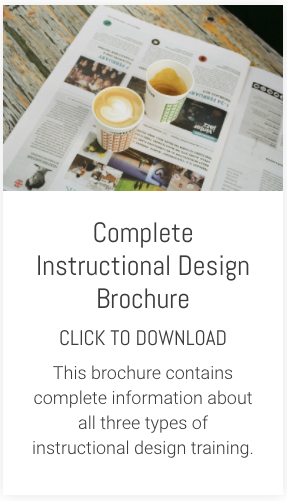It’s easy to feel uncomfortable or distracted when yet another new technology comes along.
Fresh concepts, unfamiliar vocabulary, and endless hype can leave us feeling overwhelmed or even anxious. Neuroscientists call this an amygdala response — the part of our brain that processes threats quickly kicks in, making us want to shut down or avoid the source of discomfort.
That reaction is natural. But here’s the problem: it just reinforces a sense of inadequacy. A sense that we’re “behind” or “not technical enough” to keep up. And in the new world of AI unfolding before us that feeling can become overwhelming.
I went to a fairly tech-focused, hands-on event run by Amazon Web Services in Manchester last week. And trust me I had a couple of my own, amygdala-induced, 'shall I just cut and run, now?" moments. But I stuck it out. And I'm glad that I did because the more I persevered, the more I realised something really important
Most of us in L&D are far more tech-savvy than we give ourselves credit for.
Take a step back for a minute and think about all the different tech tools in your orbit and the different ways you might use them:
-
Instructional tools → You’ve already learned to use Articulate Storyline, Rise, Captivate, or similar platforms. That’s logic, sequencing, and (if you really get into Storyline in particular) using variables.
-
LMS administration → Uploading SCORM files, managing enrolments, troubleshooting access. That’s systems thinking and workflow design.
-
Digital collaboration tools → Microsoft Teams, SharePoint, Slack, Miro. That’s user experience awareness and adoption strategy.
-
Content authoring → Video editing, podcasting, slide design. That’s multimedia fluency and interface design.
These aren’t minor skills. They are the very foundations of working with any new software, regardless of its unfamiliar associated concepts or jargon.
Now granted, not everyone is going to be expert in every one of those areas or those tools. But joining the dots between what you know already and what's emerging is probably not as difficult as you think. The “new” world of AI doesn’t replace what you already know — it connects to it.
As well as my recent experiences last week, I’ve been reminded of this in my wider journey. If you've been reading any of my recent posts on this blog or over on my new diary blog, you'll know that I'm on a journey to build a performance support app, specifically for L&D.
Moving into software development felt like jumping in at the deep end. But as I began exploring no-code tools and AI, I kept noticing familiar patterns: workflows that echoed the decision-making aspects of Storyline variables and interfaces that weren’t so different from the tools I’ve used for years.
We’re already carrying around a whole bunch of tech-related skills around with us. It's almost like discovering a hidden skillset that we never realised we had.
If you’d like to find out about how I worked through the excitement (and the fear) of stepping into a more tech-focused space, I share some of the behind-the-scenes story in this week’s Diary post.











